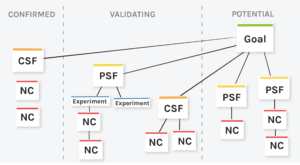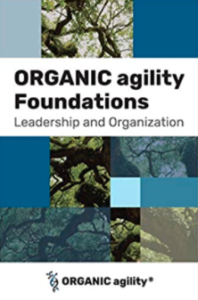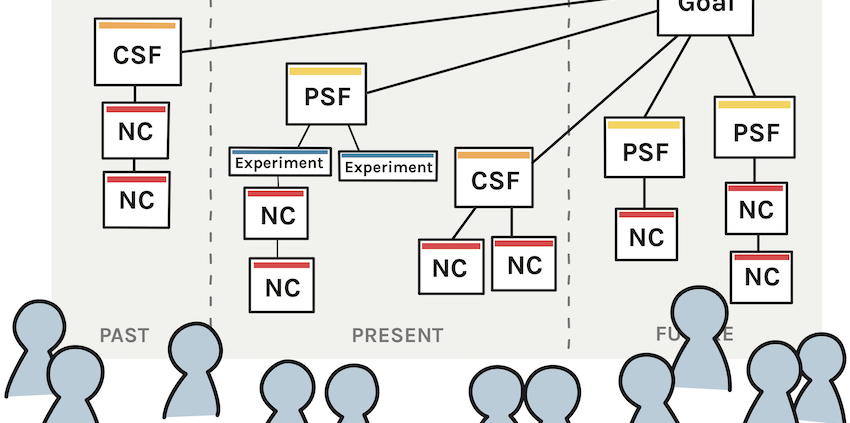Two weeks ago, Olaf and I had the pleasure of participating in the AgileCoachCamp US (#accus). We played our brand new Kanban Pizza Challenge on the Games Day, and hosted multiple open space sessions. One of my sessions got exceptionally good feedback, so I decided to provide a little more information on the agile42 Agile Strategy Map…
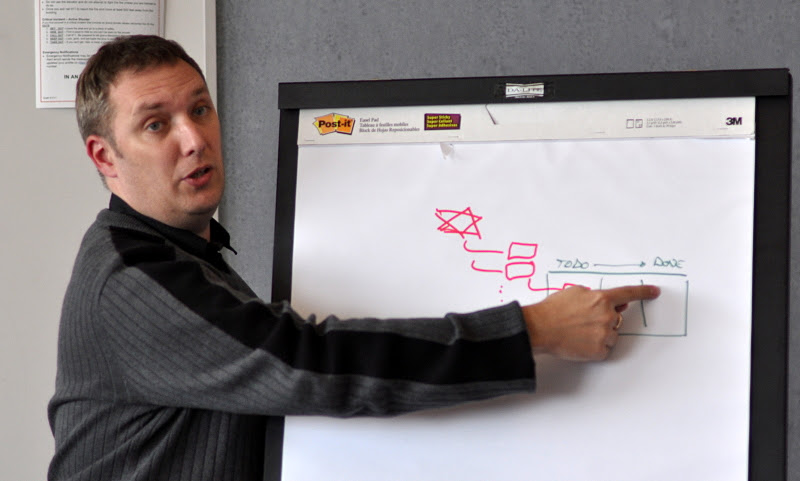
The opening question was how to effectively manage the work of the leadership or transition teams in large enterprise agile adoptions. The group quickly identified two scenarios: one in which the traditional backlog and task board approach worked extremely well; and one in which the backlog and task board lacked sufficient cohesion to lead an effective adoption, perhaps a result of lack of commitment or discipline.
In the latter case, we discussed the impact of using an Agile Strategy Map. This tool is used to visualize the strategy gap, the link between a corporate objective and the tactical actions taken to achieve that objective. As the following diagrams show, the Agile Strategy Map has 3 distinct components.
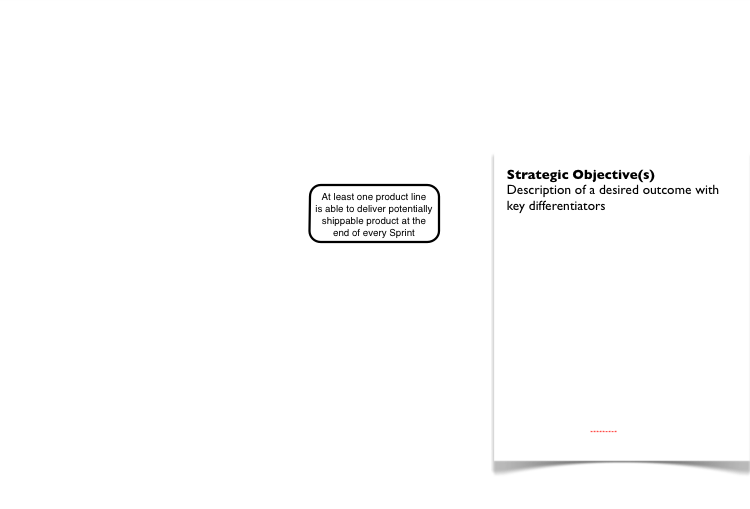
First, the center of the map is the objective of the transition. Ideally, this objective will tie directly to delivery of the corporate goals or mission. In all cases, the objective needs to be clearly stated (rather than wooly management-speak). Preferably it describes what success would look like, to help bring clarity to the purpose of the transition and allow the team to measure their progress against the aims of the transition.
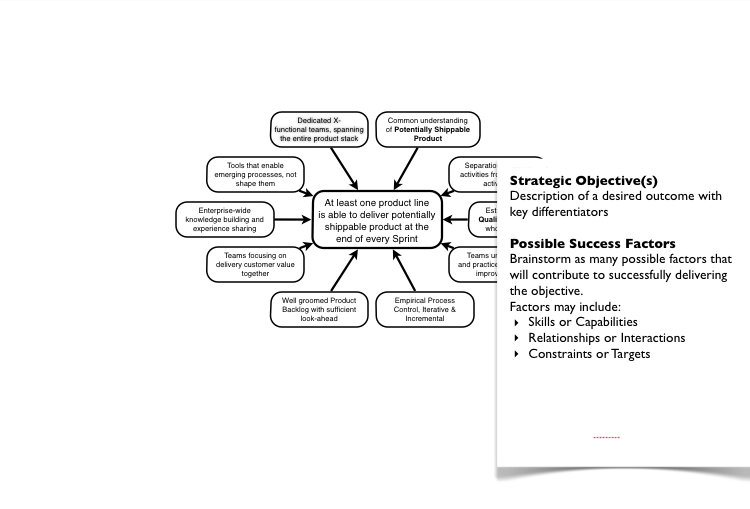
Second, as a leadership team we elicit the possible success factors that, together, will contribute to the successful accomplishment of the objective. In this case, we want to keep in mind all the possible success factors, rather than aim to pick a limited number of critical success factors. Things will change, and part of the value of the Agile Strategy Map is that it visualizes a lot of choices that can be made to deliver on the objective, rather than only showing the current plan with a limited number of success factors.
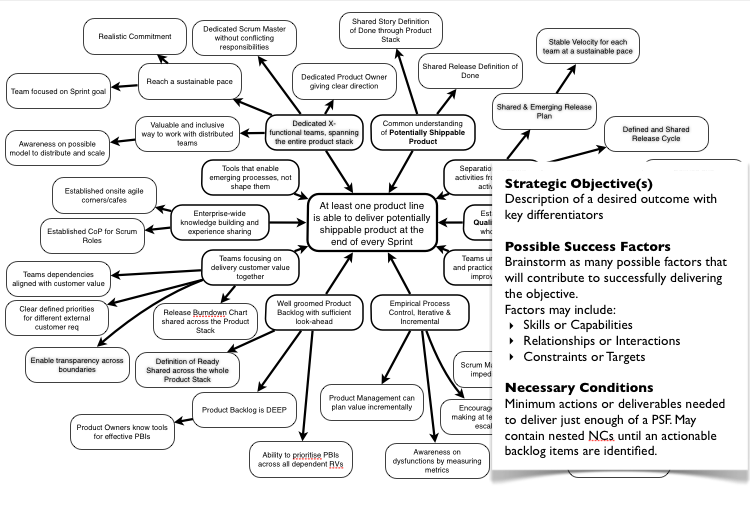
Finally, for each possible success factor we want to brainstorm as many necessary conditions required to deliver on that single success factor. These actions and deliverables should be comprehensive, before we apply conditional thinking to bring the large number of possible actions to a minimum number of necessary conditions.
For more complex situations, any of these components can be considered hierarchically. For example, a single objective might be split into a further 2-3 objectives in different areas of expertise. In this situation, it may be possible that different objectives share some possible success factors.
The outcome is a visual representation of the many different conflicting and shifting priorities that have to be managed to deliver a complex, enterprise transition. The leadership or transition team can use the Agile Strategy Map as a starting place to prioritize actions, which are than managed through a traditional just-in-time backlog and task board.
The value of the exercise is less to do with addressing the underlying issues of commitment, discipline, or poor systemic prioritization (fire-fighting) and more to do with the value of a big visible chart that clearly outlines the connection between the actions that are taken and the achievement of the objective.
Thanks to all who joined the conversation, which was lively and informative.






